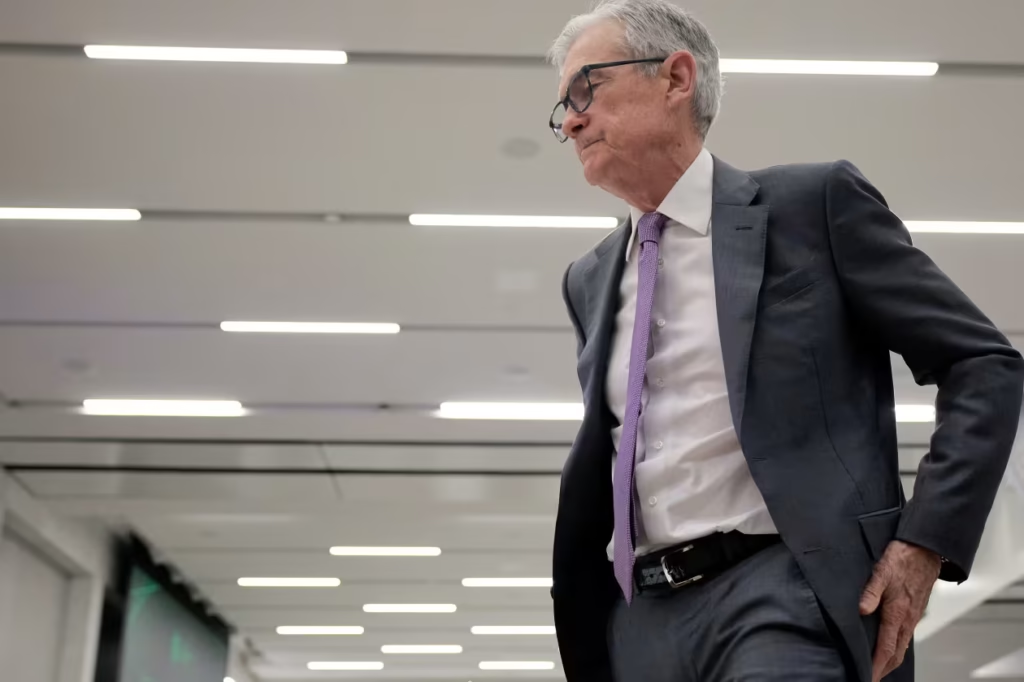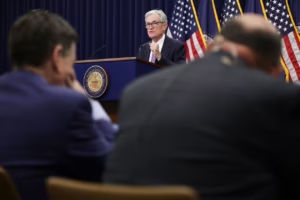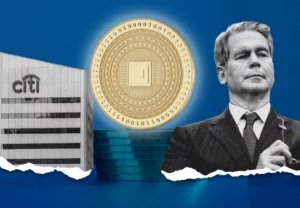On Friday, President Donald Trump called on Federal Reserve Chair Jerome Powell to lower interest rates by a whole percentage point, calling the central bank’s monetary policy a “disaster.”
The markets anticipate no action from the Fed until September. The jobs data for May was good.
Why, then, would the White House advocate for a rate reduction?
The administration’s economic team believes there is opportunity for the Fed to lower rates closer to 3%, according to White House Chief Economist Stephan Miran. Rates would be “neutral” in that situation, neither increasing nor decreasing demand.
Interest rates are currently between 4.25% and 4.5% after Fed officials stopped lowering them in December. Fed officials characterize that level as “modestly restrictive,” which slows demand and lowers inflation. According to the White House, this is no longer required.
Miran claimed that inflation “is pretty well behaved” and that “there is no evidence whatsoever of incipient reemerging inflation [or] inflation threats” during a Friday morning interview on CNBC.
Economists, however, generally believe that Trump’s tariff approach will reduce growth and increase inflation.
According to Miran, this viewpoint is incorrect. He pointed out that there was no inflation brought on by the Trump tariffs imposed in 2019. The Fed can “normalize” rates, or abandon its restrictive posture, if there are no indications of inflation and the economy is stable, Miran continued.
Fed Governor Christopher Waller, the most outspoken advocate of rate cuts, shares Miran’s outlook. Waller stated earlier this week that he believes the tariffs will only temporarily raise inflation by causing a “one-off” spike in the level of prices. He expressed his belief that the Fed could lower interest rates later this year.
Claudia Sahm, the head economist at New Century Advisors and a former Fed employee, chuckled when asked how she felt and expressed her hope that Waller was correct.
In a MarketWatch interview, Sahm countered that Waller’s opinions are pointless and that his colleagues will not be so ready to slash.
Waller predicts a brief period of inflation and an increase in tariffs. However, tariff policy has fluctuated over the last two months, and some of Trump’s duties are currently being reviewed by the courts.
“We are in a very unusual policy environment with a massive amount of uncertainty surrounding it, so anybody’s ability to forecast is really questionable,” Sahm stated.
She pointed out that the Fed will not act until there is proof that inflation is temporary, which may take months, given the uncertain outlook and the possibility of being mistaken.
“If the tariff policy continues to be a moving target, we could have elevated inflation for multiple years,” Sahm stated. She said that the Fed has more time to keep interest rates unchanged because of the better-than-expected May jobs data.
Derivative market traders predict that the Fed will lower interest rates in September and December.
Two rate cuts this year are predicted by the Fed’s own median projection. At their upcoming meeting on June 17–18, the central bankers will revise this prediction.
Deutsche Bank economists believe the Fed’s benchmark rate is already at or near neutral. This implies that rates may swing either way in the future.
“Rate hikes could even come into view over the next 18 months,” Deutsche Bank top U.S. economist Matthew Luzzetti wrote in a note to clients on Fridays.
Patrick Harker, the departing president of the Philadelphia Fed, stated that a Fed action was premature.
“Sit here and let some of this uncertainty resolve itself,” the Fed might advise. In a Friday interview with CNBC, Harker stated, “It is a mistake to take a preemptive action right now, on hypotheticals.”
If inflation declines near the central bank’s 2% target, he continued, there may be a rate cut in the second half of the year.





